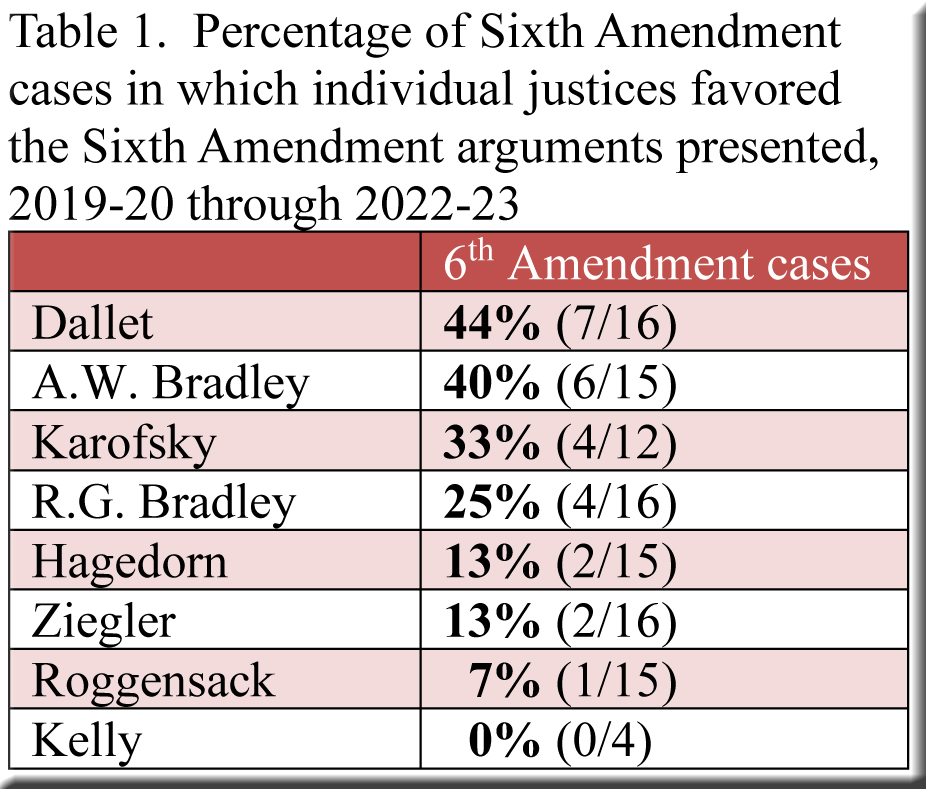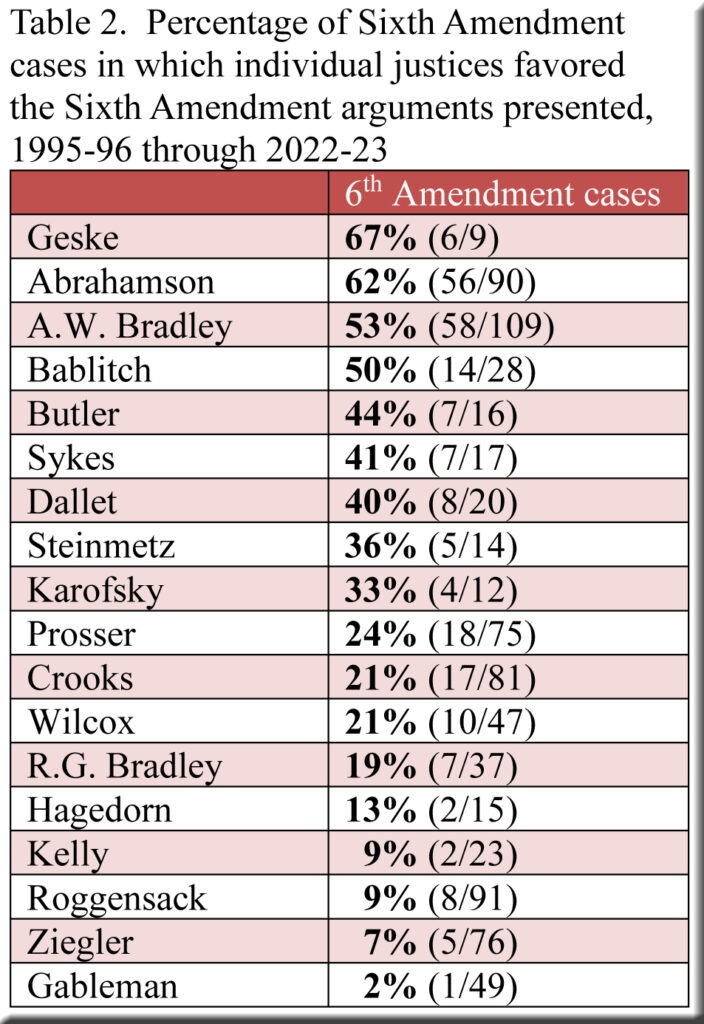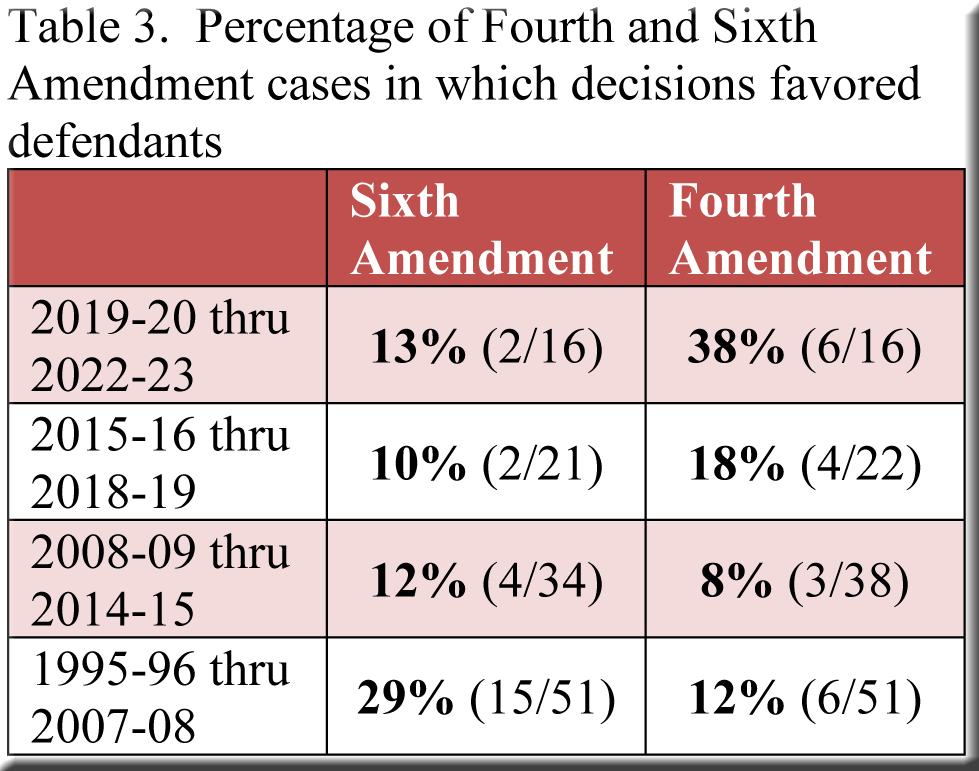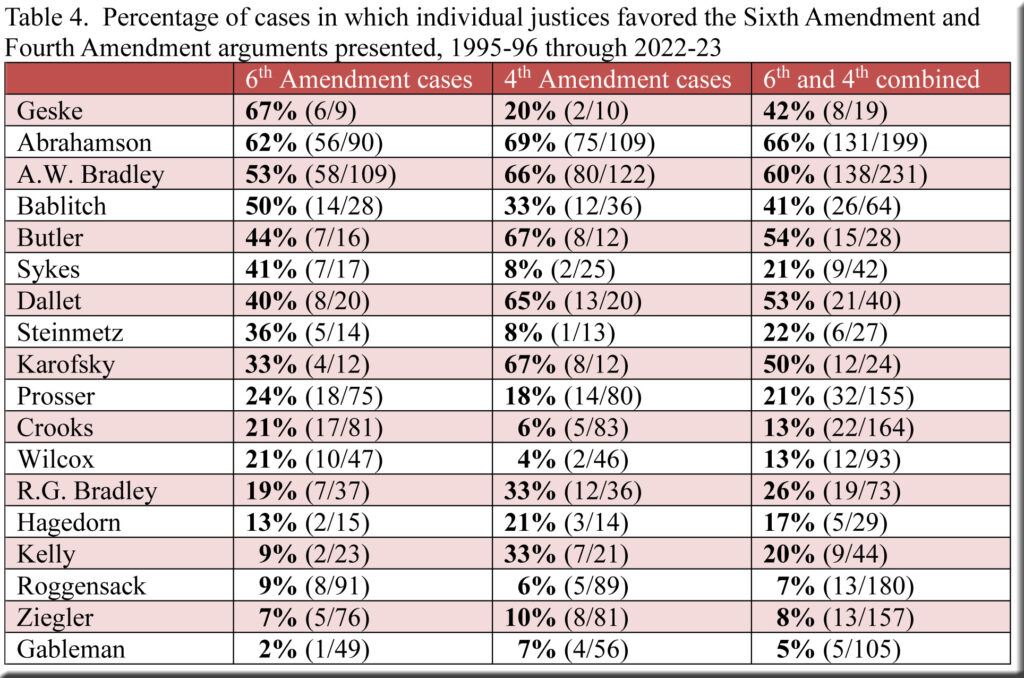Four terms have passed since our last update, and they have generated a good deal of information on the justices’ receptiveness to Sixth Amendment arguments. These cases address a defendant’s right to (1) have a prompt and public trial, with an impartial jury, (2) know the nature of the charges and the identity of one’s accuser, (3) confront adverse witnesses, (4) testify and present witnesses on one’s behalf, and (5) have a competent lawyer.[1] In today’s post we’ll highlight the range of sympathy for such arguments mustered by numerous justices—and compare these findings regarding the Sixth Amendment with the justices’ willingness to favor Fourth Amendment defenses.
Table 1 shows the frequency with which six of the current justices have accepted Sixth Amendment arguments, and Table 2 displays how they compare with previous justices over the past few decades.
The preceding post in this series found that in the first decade or so of the period under consideration, the justices revealed more sympathy for Sixth Amendment arguments than they did for their Fourth Amendment counterparts. More recently, though, that has changed—and dramatically so in the past few years. As detailed in Table 3, the court favored Fourth Amendment defenses three times as frequently as it did those invoking the Sixth Amendment over the last four terms.
Table 4, covering 18 justices who have served between 1995-96 and 2022-23, compares how frequently each justice accepted Sixth Amendment and Fourth Amendment arguments. Here, it’s interesting to note how large (or small) the gap is between the two percentages for each member of the court. For some justices, both amendments afforded substantial protection to defendants; for other justices, neither amendment offered an encouraging line of argument, while another subset of justices was considerably more receptive to appeals based on one amendment or the other.
The last column in Table 4 combines the two preceding columns, providing a rough indication of each justice’s sympathy for both Sixth and Fourth Amendment arguments. Not surprisingly, the highest percentages belong to liberals: Justices Abrahamson, A.W. Bradley, Dallet, Karofsky, and Butler, while the lowest percentages link to the court’s conservatives: Justices Roggensack, Ziegler, and Gableman. However, it bears mention that Justice R.G. Bradley, who in most cases might be expected to align with the staunchest conservatives, recorded a larger combined percentage than ten other justices (not only Gableman, Ziegler, and Roggensack, but also Kelly, Hagedorn, Wilcox, Crooks, Prosser, Steinmetz, and Sykes).
[1] To select Sixth Amendment cases, I followed the procedure spelled out in the second footnote of an earlier post. If a defendant presented a number of ineffective-assistance-of-counsel arguments, and the justices accepted at least one of them, I counted the decision as favorable to Sixth Amendment arguments. I am not including State v. Nhia Lee, which was dismissed as improvidently granted.




Speak Your Mind